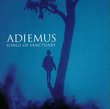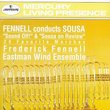| All Artists: Tristan Murail, Marilyn Nonken Title: Tristan Murail: The Complete Piano Music Members Wishing: 3 Total Copies: 0 Label: Metier Original Release Date: 1/1/2005 Re-Release Date: 9/27/2005 Genre: Classical Styles: Chamber Music, Historical Periods, Classical (c.1770-1830) Number of Discs: 2 SwapaCD Credits: 2 UPCs: 506054460222, 5060054460224 |
Search - Tristan Murail, Marilyn Nonken :: Tristan Murail: The Complete Piano Music
 | Tristan Murail, Marilyn Nonken Tristan Murail: The Complete Piano Music Genre: Classical
|
CD DetailsSimilarly Requested CDs
|
CD ReviewsEvolution of piano timbre scarecrow | Chicago, Illinois United States | 12/12/2005 (5 out of 5 stars) "It is difficult in some respects to place to focus on the French and the modern piano, we have known quite well the obvious sensuality and the timelessness of paradigm of Debussy and Ravel,Messiaen the sensitivity always to the timbre,resonance,texture, density gradations;and the virtuosity,but functioning much as a by-product rather as in an end to itself as Listz and Boulez.
The post war generation has been largley influenced by their one and only teacher Olivier Messiaen, whom Murail wrote this first piece here "Comme un oeil suspendu et poli par la songe, (1967) in order to gain entrance into the now famous composition class in Paris. In many respects we see in this first piece the DNA of Murail the sensitivity to timbre,free phrases anyplace on the keyboard; the freedom of its durational development.His musical ideology has gone much further however into appraising timbre, timbral harmonies,its evolution for what they are in real time,in registral place,in acoustic support and brilliance so you may know the "spectral" school with the late Grisey on how fast and slow harmonies, iterations of two or more tones come to be heard, or not heard, building in trajectories of timbres,supportive or not, beautiful or not, suggestive or not.These ideas are well utilized in the primary opus here the 28 minute "Territoires de l'Oubli" (1977). This is somewhat like a timbral labyrinth one enters,an unknown place at first an endless canvas of sound we cannot hear in its entirety yet Murail guides you quite specifically and predictably,with iteration of the same chord to summon overtones upwardly timbres, resonant tremoli build and build in dynamic levels to their breaking points,ugly,strident,metallic like gong-like attacks in the lower basso registers of the piano. Also quick crisp,clean filigrees of cascades of tones in the tinkly upper registers is now a lingua franca of the Seventies avant-garde, Salvatore Sciarrino,Ferneyhough,Finnissy all have come to utilize these gestures of complexity of excitement of timbre. Here however Murail lets timbres be what they are allowing them to build and decay within their own lifeworlds, and as Adorno said someplace the creator pays a price for this, for this works exhuast Murail's piano vocabulary.He gives his materials conviction of purpose however, and simply sets things in motion; no editing is allowed here. Nonken in all this music is simply wonderful,precise playing,cleanly disposed,andshe adhers to the arduous tasks of the distinguishability of the multi-variegated textures is what this music needs; she has a real in depth sensitivity to this music as if she wrote it herself,she has some special kaliedscopic vision; she savors each moment,each gesture as it should imprint intself on one's consciousness. The dedication to Messiaen "Cloches d'adieu et un sourire" is a touching tribute, memorial, again clangorous chords,that we have heard before in Messiaen as well;gamelan like in suggestive places,and as you work your way through these two disks you will find Murail's aesthetic as one-dimensional like simply a revistation of the same musical materials only with added maturity,augmented vision in living with and around timbre. To me then the highlight here is the "Les Travaux et les Jours"(2003). These are framed as miniatures, but they really work for me more as timbral "etudes",scouring all the the piano is capable in desnity, in texture,in gradations of colour.A miniature is suppose to do one or two things and modestly end, as they do here,but these works work as self-contained photos of timbre.One profound feature of Murail is that although he fairly utilzes what one might expect in French music, (the French philosopically are fairly cloistered, myopic in what they choose for points of reference and conceptual dimensions),there really never is a predictability of characters in the music that emerges, he does not make music as a poetry a narrative in sound,despite the fact that the subject matter for much of his music has a programmatic dimension to it,a mystery, in surreal image, a timelessness similar very much to Debussy(although he himself is the center of this narrative in his incessantness) he lets timbre simply have its own freedom,shaped and sculpted and this is what gives his music the independent power it needs, and it is what has distinguished his oeuvre from other younger generation French composers, as Grisey, Dalbavie, Fenelon,Dusapin,Bonnet. Murail comes close to Hughes Dufourt, who also has found a means to allow this paradigm of freedom and un-freedom in musical language to work its way by itself guided by a working concept,th way timbre works in nature be it spectral analysis or simply sensitivity to the history, the trajectory of music, its evolution.They allow predictable beauty to placed in this highly colourful and dense context. This side of the Atlantic seems to allow this evolution to take its own course not guided by creation and its agenda for innovation,for breaking into a new paradigm as Badiou might say,(Thomas Kuhn and Imre Lakatos as well). This final work is more focused in each selection,parcelled out in smaller doses, fragments of this predictable piano language Gestures are clearly defined, arrogant at times incessive as #4, or more sensual as #1,or clangorous overwhleming as #8,single basso tones directing the meak single ascending tones,like a mystery that never comes to resolution. You still have the roaring resonant to deal with, and the toccata like gestures, but Murail brings it all into focus for the listener. He did not succomb to a post-neo-romanticism, more accesible in scope and vision as his Parisian brethren had as Dusapin, Eotvos and Dufourt. Again the sheer development of timbre for the piano has marvelous realization here, timbres are simply allowed to build uncontrollably. . . ." |

 Track Listings (6) - Disc #1
Track Listings (6) - Disc #1




